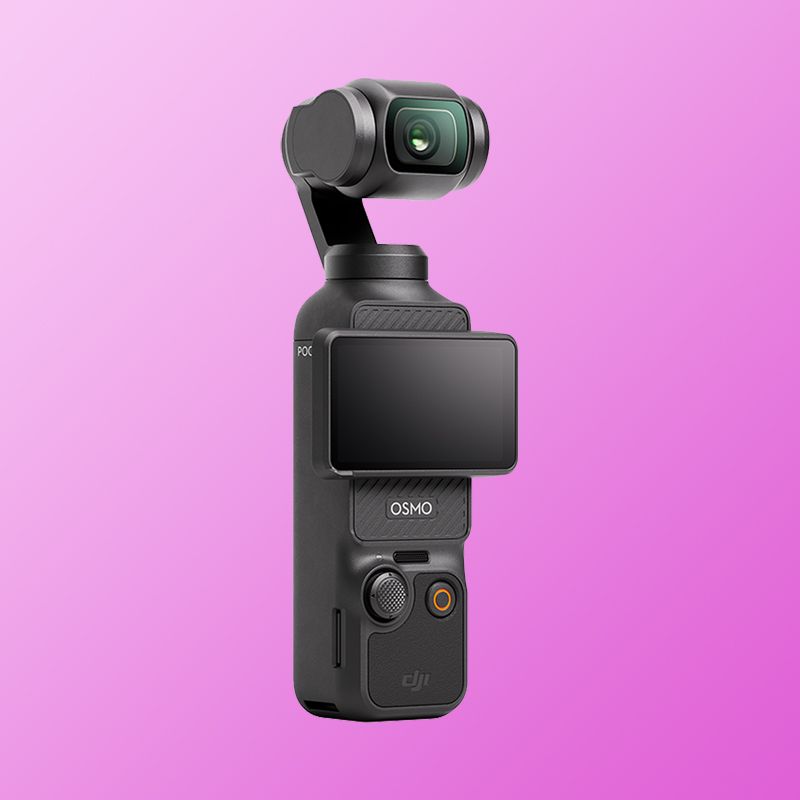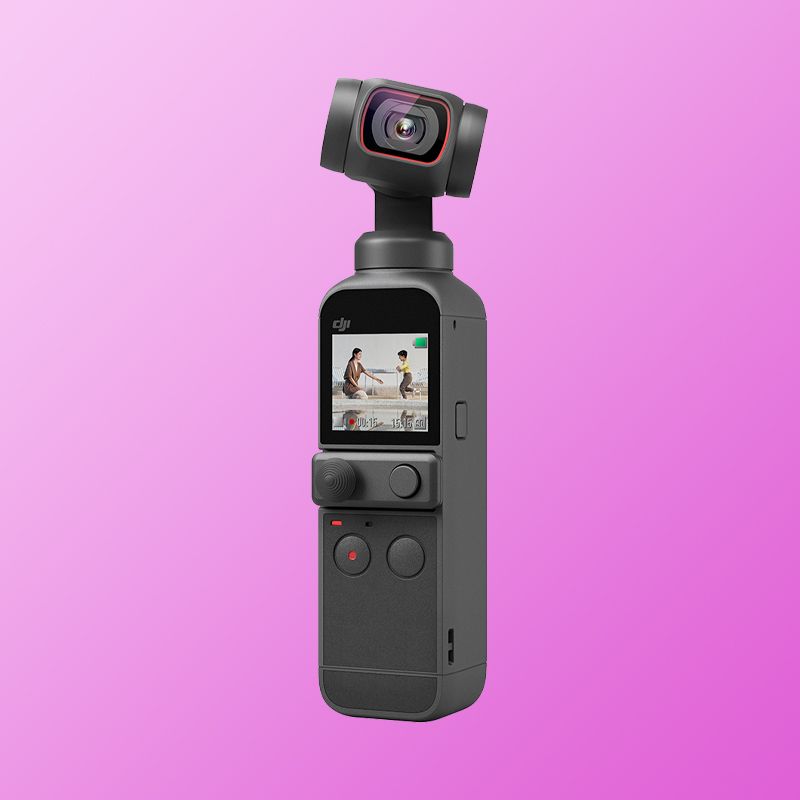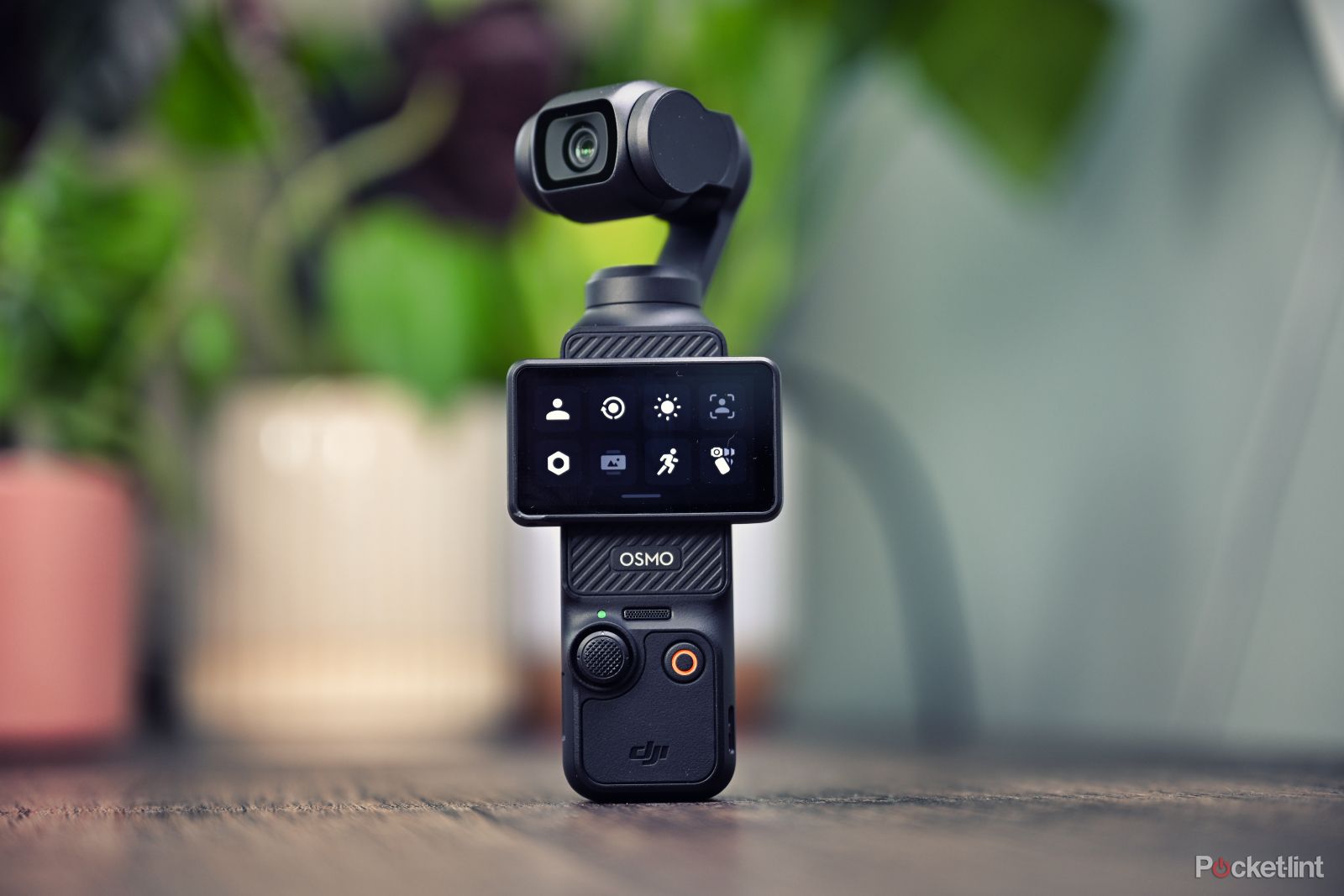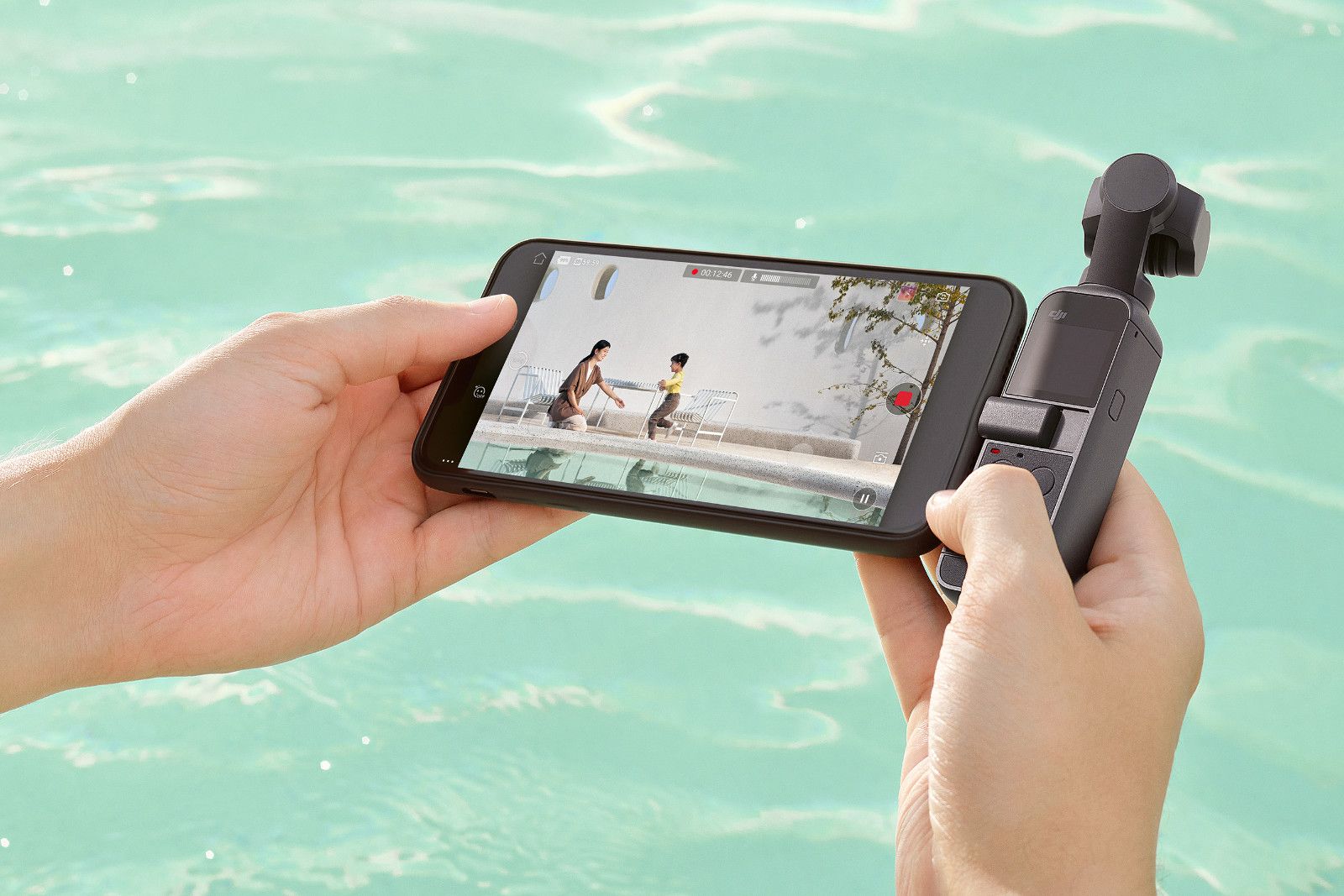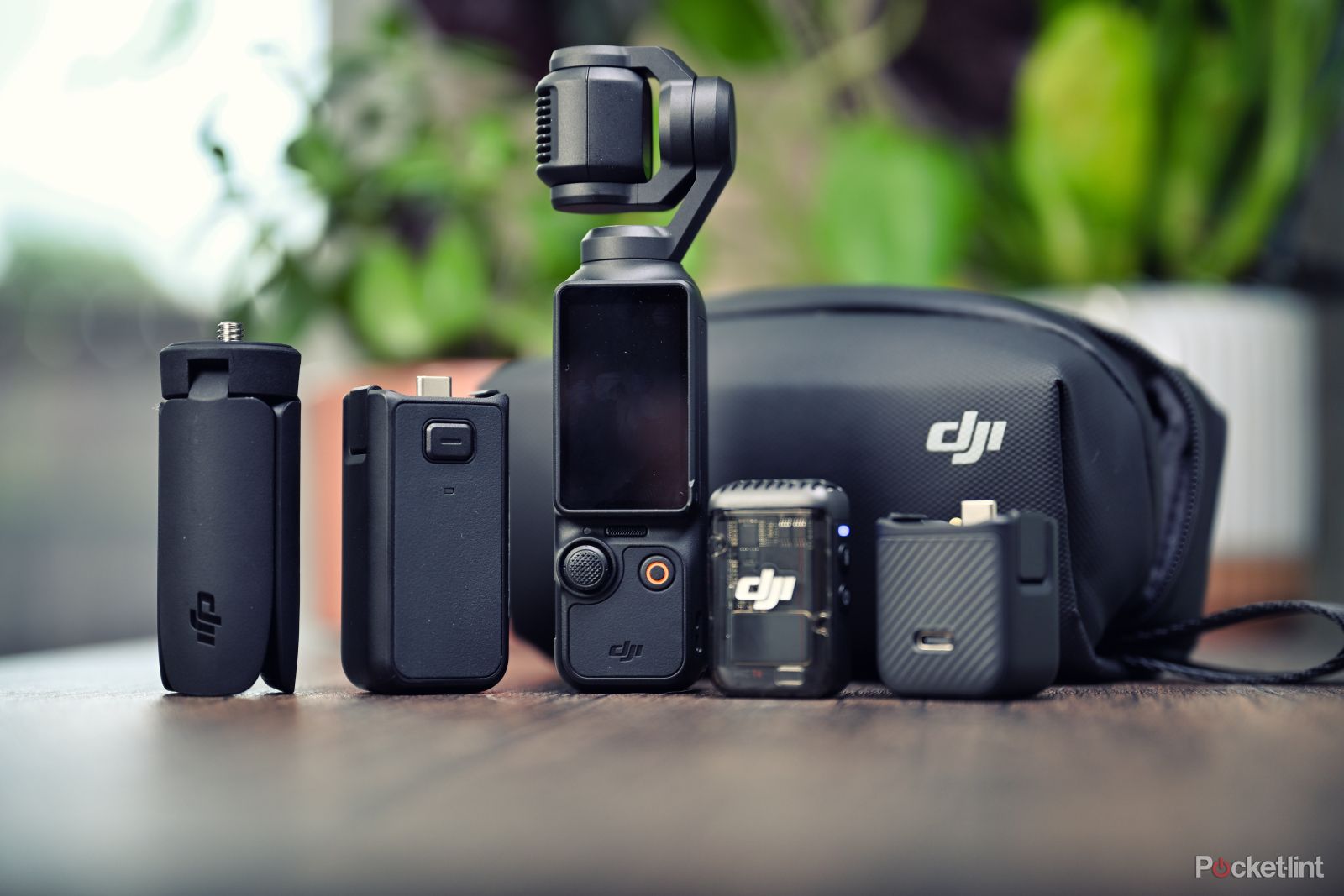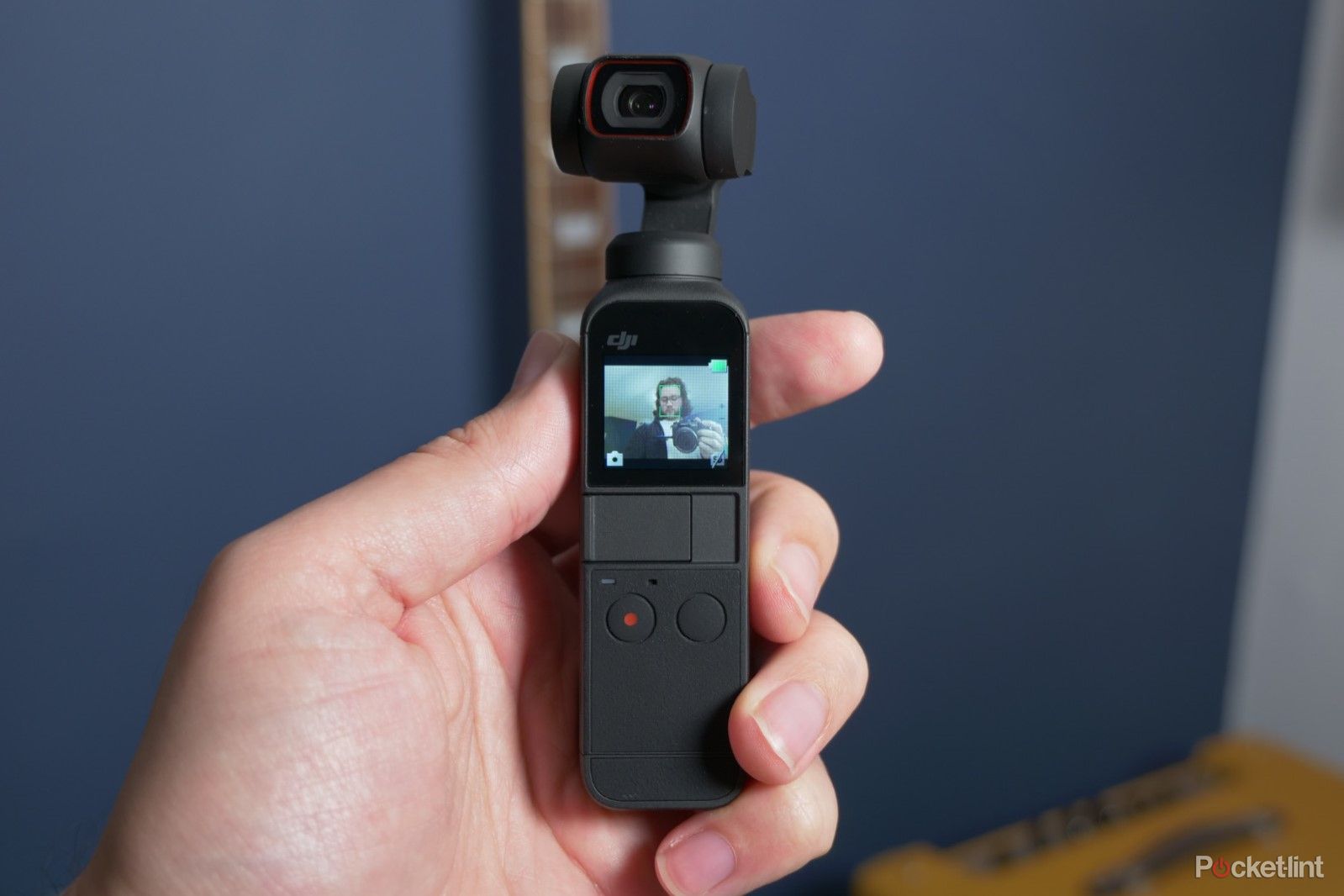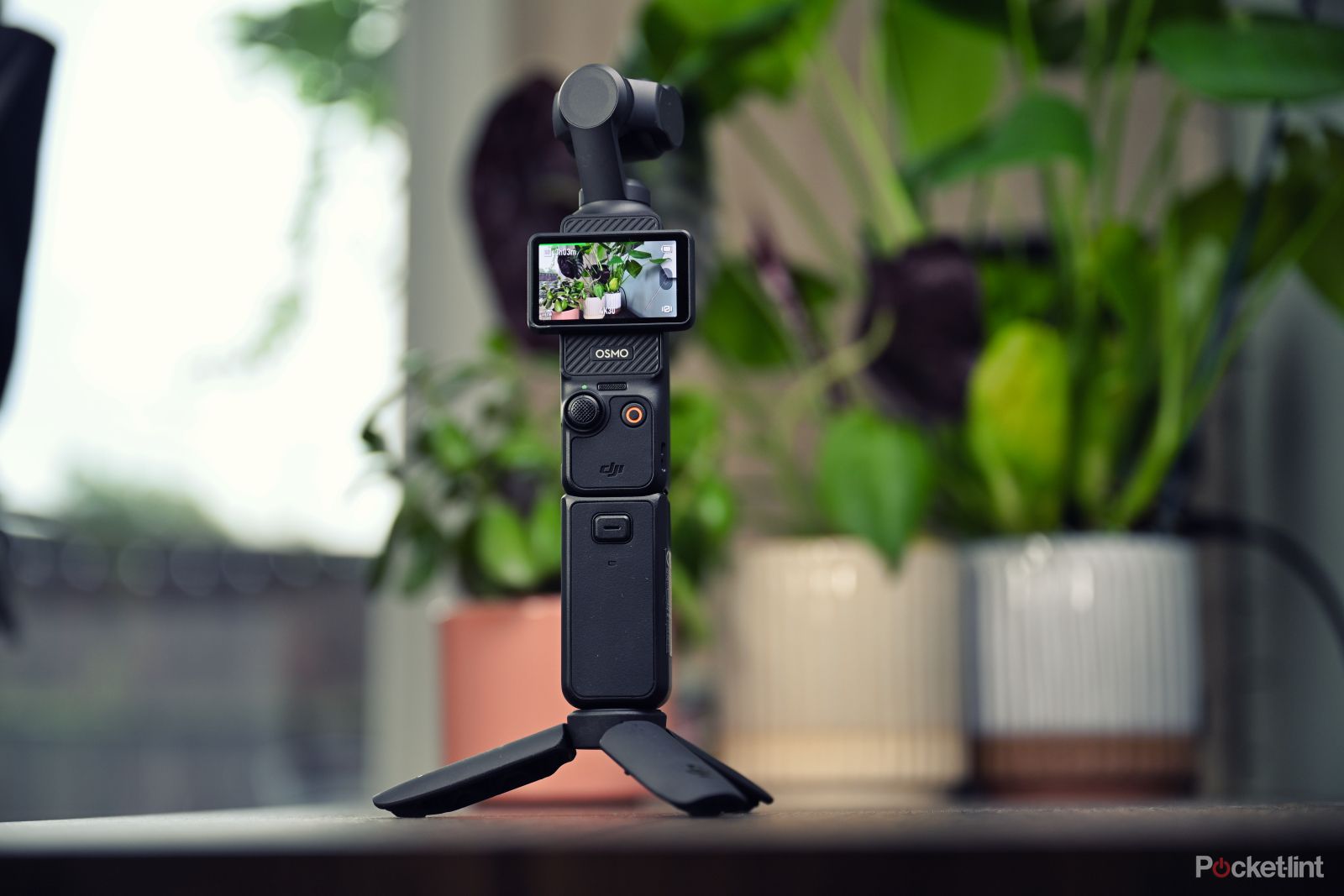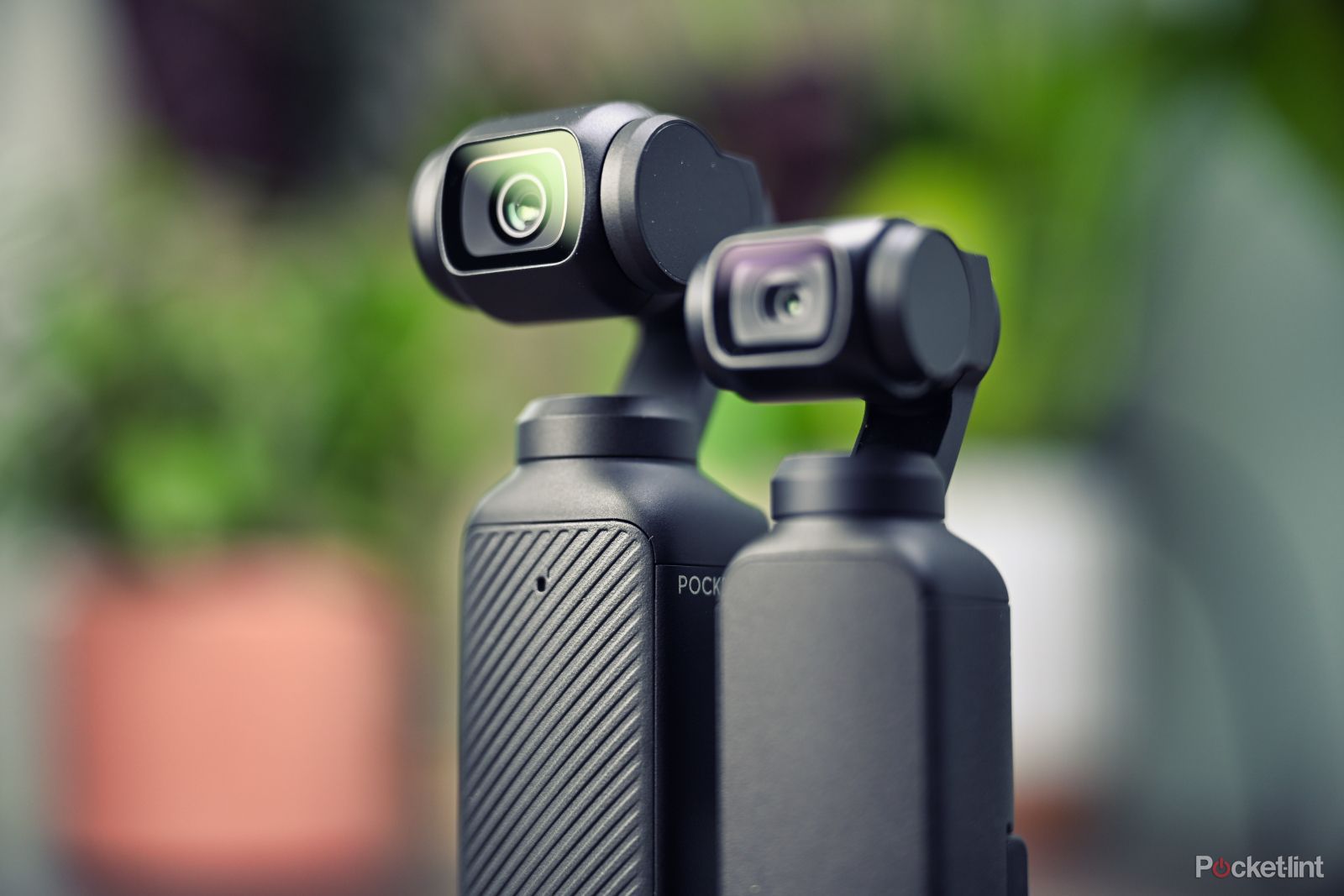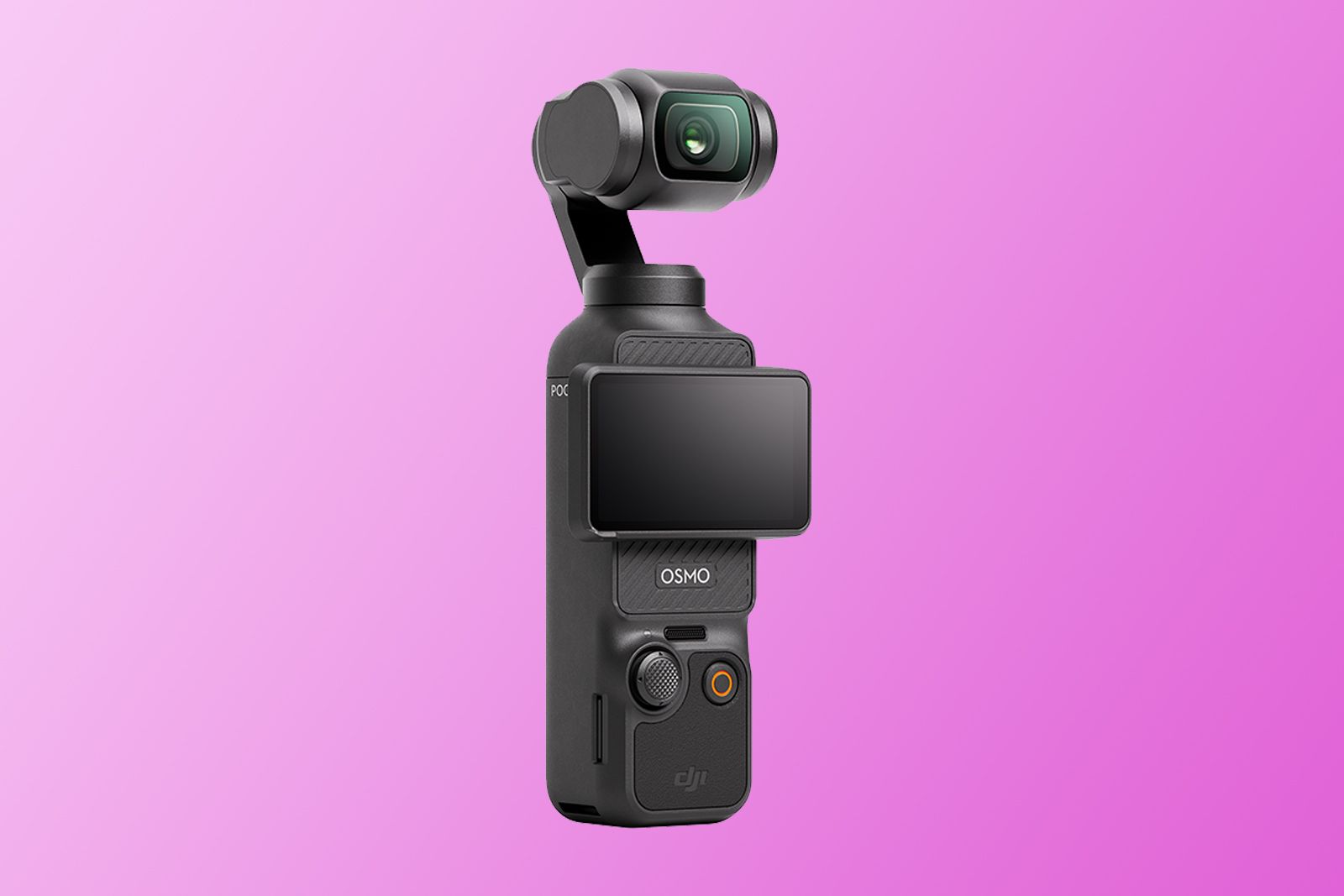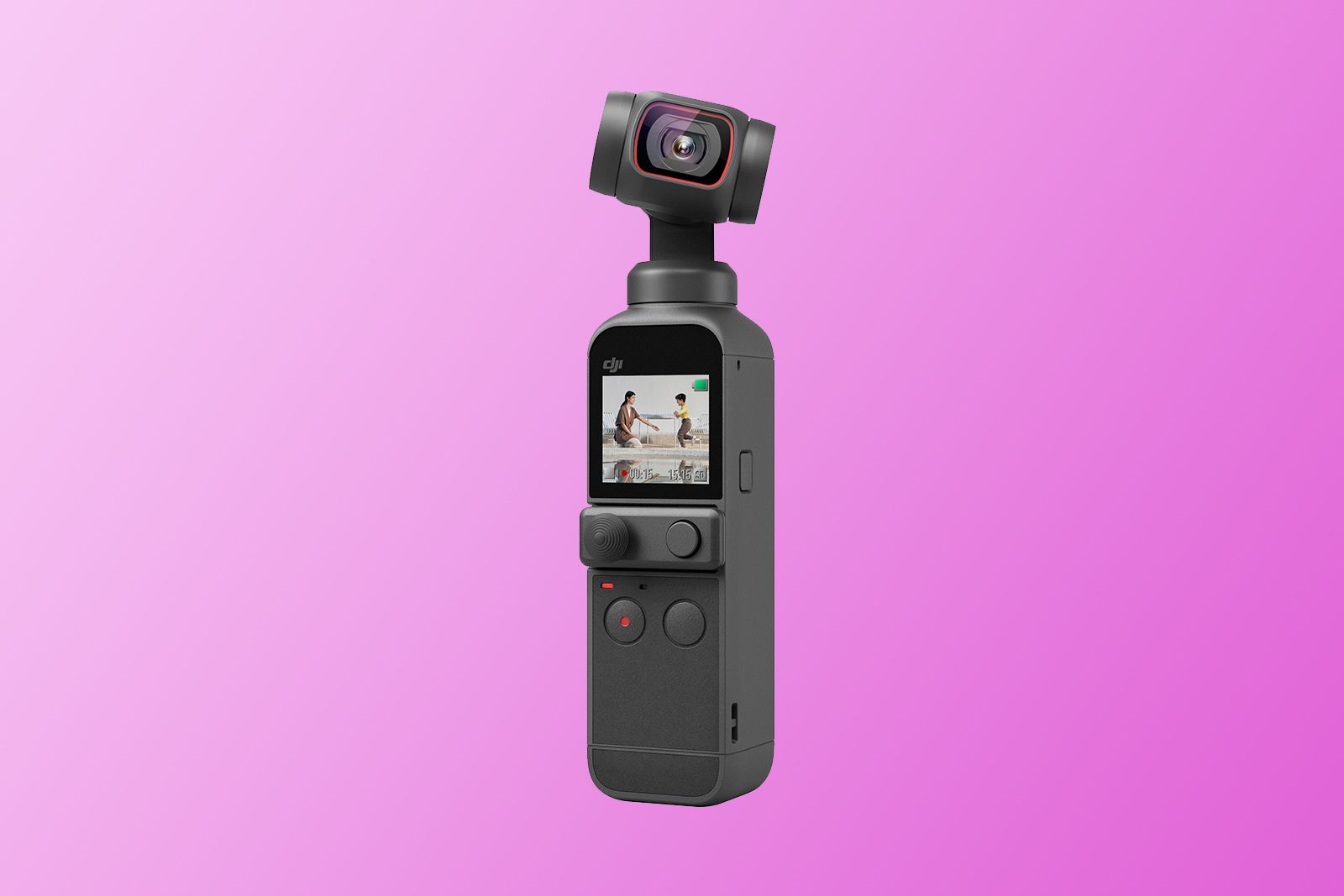-
DJI Osmo Pocket 3
Our top pickThe Pocket 3 is a massive upgrade over its predecessor. The larger swivelling display makes it way easier to use, while a 1-inch sensor, lightning-quick autofocus and better slow-mo make videos look amazing.
Pros- Large 1-inch sensor
- Large swivelling tocuhscreen
- Up to 4K120 slow-motion
Cons- More expensive
-
DJI Pocket 2
Best valueThe DJI Pocket 2 still has plenty to offer, especially if you value compactness and portability. It's much smaller, it's more affordable and it also boasts higher-resolution photography than the newer model.
Pros- Still shoots in 4K60
- Better for photography
- Available for less money
Cons- Worse for low-light and slow-mo
After a lengthy hiatus, DJI is finally back with another Pocket camera, the Osmo Pocket 3. It's quite the upgrade, too, packing in a 1-inch sensor and boosting the slow-motion capabilities of the mini gimbal camera.
However, the new model also increases the price significantly, as well as the physical size. So, while its capabilities might have improved, it's not as pocket-friendly as it once was, literally and figuratively.
If you're weighing up the pros and cons of upgrading or thinking of trying out a DJI Pocket camera for the first time, you're in the right place. We've compared these two cameras from every angle to find out where they excel and where they might miss the mark. Let's take a look.
Price, specs and availability
The DJI Pocket 2 was released in November 2020 and came at a price of $349 for the basic kit or $499 for the Creator Combo, which adds a wireless microphone, mini tripod, "Do-It-All" handle and wide-angle lens adapter.
The DJI Osmo Pocket 3 launched on October 26 2023 and comes in two very similar configurations. The basic kit will cost you $519, and the Creator Combo, with the upgraded DJI Mic 2 and battery handle, retails for $669.
This is a pretty hefty price increase of $170 for either option, but it should also provide much more impressive results. You can see a quick overview of the specs below; then, we'll dive into each area in more detail.
DJI Osmo Pocket 3 DJI Pocket 2 Brand DJI DJI Sensor Size 1-inch 1/1.7-inch Video Resolution Up to 4K60 / 4K120 slow-motion Up to 4K60 / 1080p 240 slow-motion Photo Resolution 9.4MP 64MP Battery 1300mAh / Up to 166 minutes 875 mAh / Up to 140 minutes Connection USB-C USB-C Size 139.7 × 42.2 × 33.5mm 124.7×38.1×30 mm Weight 179g 117g Lens 20mm equiv. f/2.0 20 mm equiv. f/1.8 Storage microSD microSD
Design
The Pocket 2 and 3 have a similar form factor, but the Pocket 3 is larger in all dimensions and significantly heavier, too. Despite being a bit more to lug about, the design of the Pocket 3 is superior in two crucial ways: The larger screen and the built-in joystick.
The Pocket 2 (and the original Osmo Pocket) were designed around the concept of using your smartphone as an auxiliary display, which could be connected via USB-C or Lightning with modular dongles. This was a cool idea, but it was basically a necessity due to the postage-stamp-sized display on the older models. If you wanted to get a clear view of what you were recording, you basically needed to use your smartphone.
The Pocket 3 does away with this concept simply because it no longer needs it. It has a 2-inch touchscreen display, which can be swivelled into portrait or landscape orientation. It makes the camera infinitely easier to use standalone. It's also worth mentioning that you can monitor and control the cameras wirelessly with the smartphone app, and this works with both models, but it requires a WiFi accessory for the Pocket 2.
The new joystick makes it much easier to control the panning and tilting of the gimbal simply because it's larger. The Pocket 2 comes with a joystick on a modular tab, which works fine but is much smaller and, therefore, a bit trickier to manipulate.
Features and accessories
Neither the Pocket 2 nor Pocket 3 has a mounting solution built in, but both cameras come supplied with an adapter that mounts to the base, adding a 1/4-20 tripod thread. They also both come supplied with a hard plastic protective cover, a wrist strap and a charging cable. As mentioned, the Pocket 3 does away with the modular dongle concept, but the Pocket 2 comes with Lightning and USB-C modules, as well as a module with a joystick and button.
The design of the protective cover is quite different between the two models. The Pocket 2 comes with a simple sheath to protect the gimbal and screen, whereas the Pocket 3's case has some added utility. It has places to store lens adapters and ND filters, which is handy, but it's also quite a bit larger, so it'll take up more space in your backpack.
Both models are available as a Creator Combo, and you'll get a similar range of accessories with each. There's a wireless microphone, tripod and wide-angle lens adapter in both cases, but there are a few key differences, too.
The Pocket 2 combo includes a "Do-It-All" Handle, which adds WiFi, Bluetooth and wireless mic connectivity to the camera. These features are all built-in to the Osmo Pocket 3, so no such accessory is required. Instead, you get a handle with an auxiliary battery pack, which gives you an extra 950 mAh of juice.
The Osmo Pocket 3 Creator Combo also comes with a neat little soft-shell travel case to keep all your gear organised, and DJI offers no such solution for the DJI Pocket 2.
The wireless mic is upgraded in the Pocket 3 kit; you now get a DJI Mic 2 transmitter included in the package. This has an updated look and performs excellently, but DJI hasn't shared its exact specifications just yet, so it's hard to say exactly how much better it is.
The features and modes available on both cameras are quite similar. However, the Osmo Pocket 3 offers a new Low Light Video mode and does away with the dedicated HDR Video mode that we saw on the Pocket 2. This is because the Pocket 3 will always capture the maximum dynamic range without the user needing to activate a specific setting.
Photo and video performance
The single biggest difference between these two cameras, when it comes to imaging performance, is the sensor size. The Osmo Pocket 3 packs in a massive 1-inch sensor, almost doubling the size of the 1/1.7-inch sensor in the Pocket 2. This affects the image in two main ways.
Firstly, you'll notice a much shallower depth-of-field, where your subject will be in focus, and the background will be blurry. This gives the look of a high-end camera rather than the typical smartphone look where everything is in focus. It also means that it's much better at handling dimly-lit situations. Videos will look brighter, and there will be less grain and noise in the shadowy areas of your frame.
In video recording, both cameras offer up to 4K60 video as standard, but the Pocket 3 has much better slow-motion capabilities and is able to capture up to 120fps in 4K. The Pocket 2 doesn't offer slow motion in 4K resolution, but both cameras can shoot at up to 240fps in 1080p.
Both cameras have excellent stabilisation, thanks to the built-in gimbal, but the Pocket 3 has the edge in low light due to the larger sensor, which allows it to use higher shutter speeds, reducing blur. Both have great autofocus, but again, the Pocket 3 is more impressive. Its full-pixel AF system is extremely quick and reliable, which is doubly impressive when you account for the shallower depth of field the new sensor produces.
For stills photography, surprisingly, the Pocket 2 offers a much higher resolution. It's able to capture up to 64MP images, compared to just 9.4MP on the Pocket 3. Most people would prefer to shoot stills on their smartphone rather than the Pocket, so this is unlikely to be a dealbreaker. But if the idea of shooting stills with your DJI Pocket appeals, then the Pocket 2 might still be the way to go.
Verdict
The DJI Osmo Pocket 3 offers superior imaging performance, better autofocus and more impressive slow-motion than its predecessor. It's also much easier to use, thanks to the swivelling display and larger joystick. For these reasons, it's the camera I'd choose.
However, it's also significantly more expensive, larger and heavier. And if you plan to take stills, it offers a much lower resolution in photo mode. The Pocket 2 still has plenty of merit in 2023, and it may get even more affordable now that its successor has arrived. So, if you're seeking the best value Pocket camera, it's likely the way to go.

